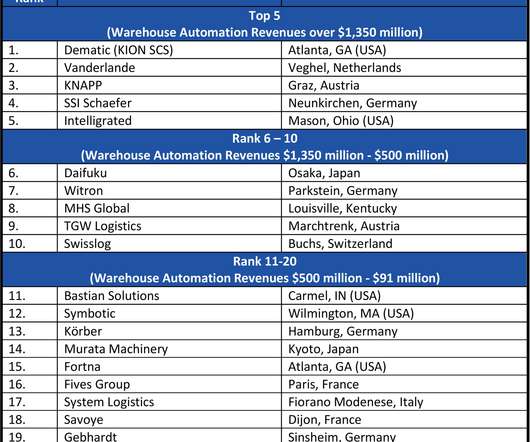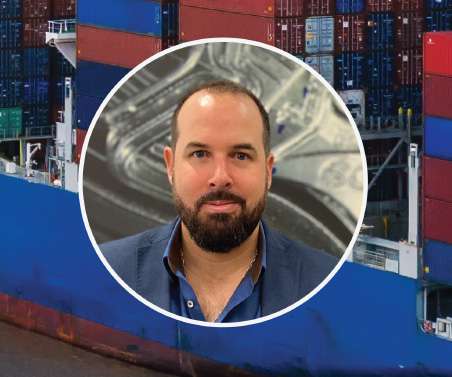Top 20 Warehouse Automation Suppliers Worldwide
Logistics Viewpoints
OCTOBER 26, 2022
ARC Advisory Group began conducting formalized research on the global warehouse automation market in 2014. In my own defense, things kind of took off after 2014. Also, warehouse automation excludes similar systems such as airport baggage handling, manufacturing-line automation, and manually driven forklifts. billion in 2019.























Let's personalize your content